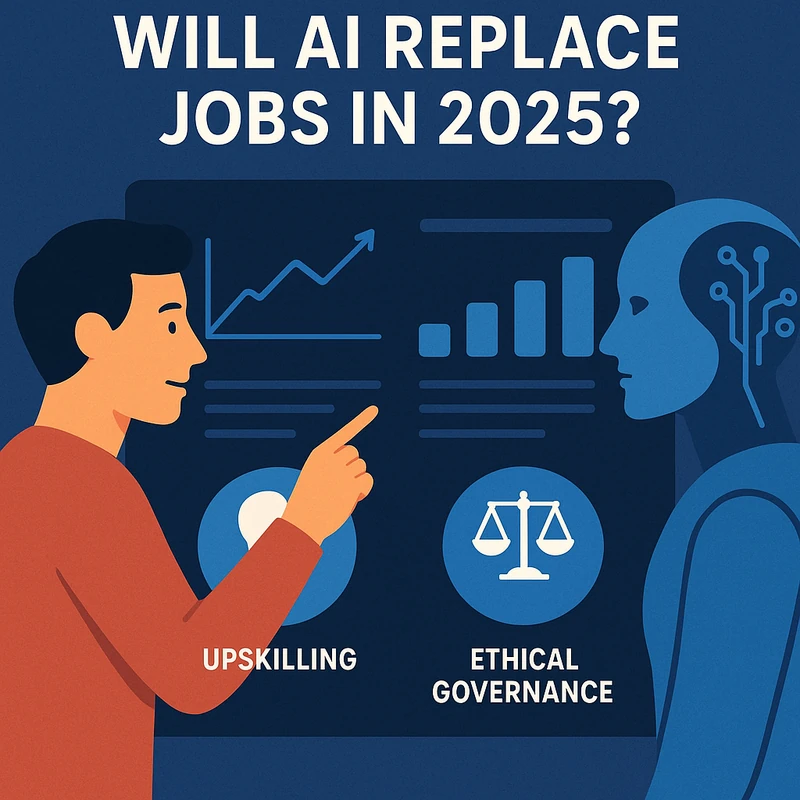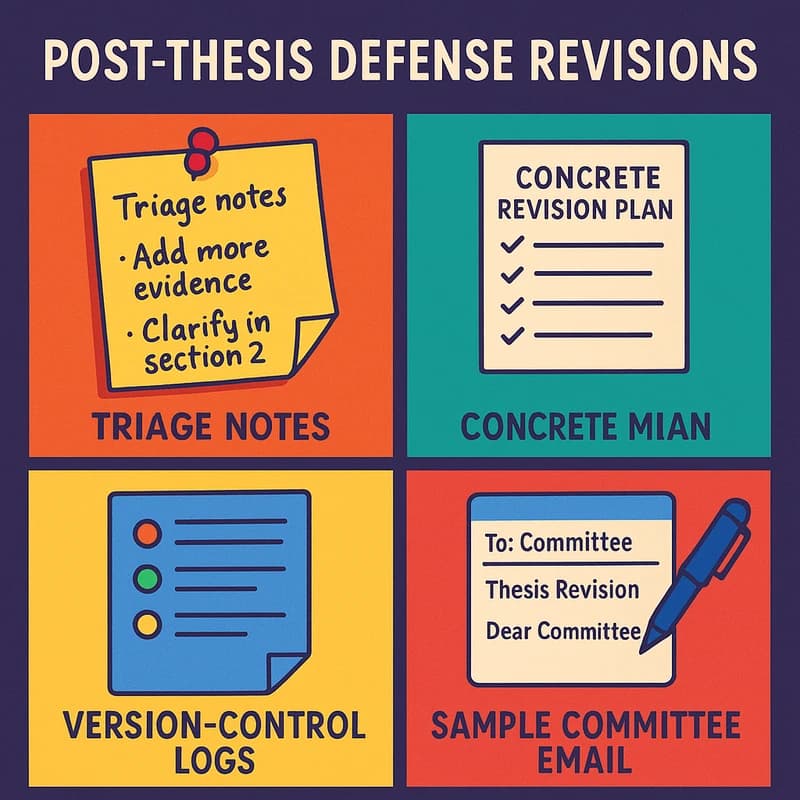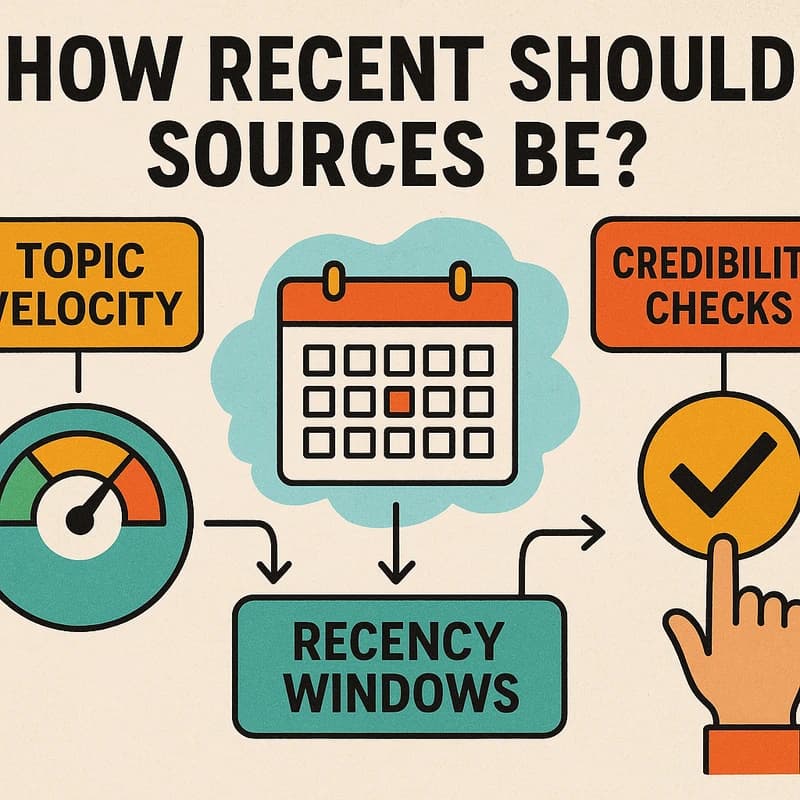Will AI replace jobs? Not everywhere. Discover which tasks go, which grow, and practical upskilling steps to thrive with human–AI collaboration in 2025.
Quick Answer
Will AI replace jobs? Not across the board, but it will automate many repetitive tasks while creating new roles in oversight, design, and ethics. The viral 48-hour report claims up to 40% of global jobs could be automated by 2030; real-world pilots show cost reductions around 50% in AI-driven workflows. Workers can protect prospects through targeted reskilling and smart human–AI collaboration.
Key Takeaway: The future of work isn’t a wipeout—it's a reshuffle that rewards humans who upskill and partner with AI.
Complete Guide to Will AI Replace Jobs
When we talk about Will AI replace jobs, we’re really analyzing a spectrum: automation of routine tasks, augmentation of complex decision-making, and creation of entirely new roles in tech oversight, ethics, and design. In this guide, I’ll weave fresh data from 2024–2025 with real-world examples, plus practical steps you can take—from reskilling to policy awareness—to navigate an AI-led economy. Expect a mix of street-smart intuition (hello, Miami pop-ups) and data-driven strategy you can apply whether you’re freelancing, climbing the corporate ladder, or steering a small business.
What the data says is nuanced. A leading tech think tank recently highlighted sectors like customer service, manufacturing, and even creative fields as at risk, while also underscoring opportunities in AI governance, data analytics, and creative-aided workflows. In practice, companies piloting AI-driven processes report significant efficiency gains—think cost reductions around 40–50%—while also needing human oversight to manage quality, ethics, and customer trust. The impact isn’t doom-and-gloom; it’s a transformation that favors adaptable workers who can pair judgment with machine speed.
Key Takeaway: Will AI replace jobs is not a binary answer. It’s a map of which tasks survive, which are automated, and where new human roles emerge—especially in data literacy, governance, and AI-enabled creativity.
- Related topics you’ll want to explore later: AI ethics in employment, reskilling for the AI era, universal basic income debates, human–AI collaboration, governance of automation, data analytics for decision-makers.
The Scope of Automation: Which Jobs Are Most at Risk and Why
Across industries, routine, rule-based tasks are prime targets for automation, while roles requiring nuanced human judgment, empathy, and strategic thinking tend to resist full automation. In customer service, AI chatbots and sentiment analysis can handle routine inquiries, but escalations, relationship-building, and complex problem-solving remain human strengths. In manufacturing, robotics and process optimization pinch costs, yet maintenance, supply-chain orchestration, and quality assurance require human supervision. In creative fields, AI can generate drafts or assists, but originality, taste, and brand storytelling still demand human direction.
Recent developments show this isn’t a niche trend: in the last quarter, AI-enabled workflows have been piloted by large firms, yielding noticeable efficiency gains and cost reductions, while simultaneously creating demand for roles in AI curation, ethics, and data interpretation. Analysts emphasize that the most resilient workers will combine domain expertise with data fluency, enabling them to guide AI systems in ways that align with business goals and social responsibility. This is particularly true for marketing, where AI can automate data synthesis but creative strategy remains human-led.
- Data points to keep in mind:
- Up to 40% of global jobs could be automated by 2030, according to the viral report, especially in routine tasks.
- Real-world pilots report cost reductions around 50% when AI-driven workflows are properly integrated with human oversight.
- Search interest in AI job loss solutions surged by roughly 300% in the past day, signaling a surge in public appetite for practical, human-centered strategies.
Key Takeaway: Automation targets the repetitive and data-heavy, but human skills—empathy, strategic thinking, creative judgment—remain scarce and valuable. The winning plan combines AI efficiency with human leadership.
Reskilling and Upgrading: The Skills That Matter Now
The AI era is not about replacing humans; it’s about upgrading human capabilities. In practice, the most in-demand skills blend data literacy with domain expertise. Think data analysis, AI ethics, bias mitigation, model validation, and interpretability—plus the soft skills that machines struggle with: nuanced communication, creativity, problem-solving under ambiguity, and relationship-building.
For workers eyeing resilience, two tracks stand out: (1) technical fluency—coding basics, data storytelling, understanding AI toolchains; (2) domain mastery—specialized knowledge in marketing, design, healthcare, or manufacturing processes, paired with AI-assisted workflows. Companies increasingly value cross-functional talents who can translate business needs into AI-enabled processes and then interpret results for stakeholders.
- Data points to consider:
- Demand for data analytics and AI ethics roles has risen as organizations seek responsible AI integration.
- Upskilling programs that couple technical training with project-based outcomes tend to yield faster promotions and wage growth.
- Universities and employers are piloting micro-credentials in data literacy and responsible AI to bridge skill gaps quickly.
Key Takeaway: Invest in a hybrid skill set—data literacy plus domain expertise—to become an indispensable bridge between AI systems and business outcomes.
The Policy and Regulation Landscape: Why Policy Matters
Policy environments can accelerate or slow the pace of AI adoption and its impact on jobs. In 2025, debates around universal basic income (UBI), wage subsidies, and retraining budgets are intensifying in many economies. Regulators are increasingly focused on ensuring that AI deployment includes transparency, accountability, and fair transitions for workers. The conversation isn’t just about automation; it’s about how to cushion the social impact with robust safety nets and proactive education systems.
As a consumer, employee, or business leader, staying informed about policy shifts—like funding for reskilling, guidelines for AI governance, and debates around UBI—helps you anticipate changes and advocate for practical, humane solutions. The trend is toward policy that supports universal access to skills training and a safety net for those navigating transitions.
Key Takeaway: Strong policy frameworks—focusing on reskilling, fair transitions, and ethical AI—can democratize the benefits of automation and reduce inequality.
Practical Takeaways for Individuals and Firms
For individuals: start with a skills inventory of your role and map tasks that could be automated. Then identify two to three skills to add (data literacy, AI ethics, project management in cross-functional teams) and seek short courses or micro-credentials. For firms: audit workflows to locate high-volume, high-variance tasks where AI can help, then pair automation with citizen-led training programs and internal upskilling.
- Related topics for internal linking: AI governance in business, data literacy programs, upskilling schemes, AI ethics guidelines, agile work design.
Key Takeaway: The path to a resilient career is proactive learning, practical AI collaboration, and an organizational culture that values human–machine partnerships.
Why This Matters in 2025
The debate around AI and employment is front-page news, but what matters most is practical impact. In the last three months, major tech firms have shared mixed signals: some soft layoffs tied to organizational restructuring, others accelerating AI-enabled productivity gains. Across industries, the push to automate routine tasks has grown, but the speed and scope of replacement depend on task type, regulatory constraints, and organizational readiness.
Economists warn that without deliberate policies and robust reskilling programs, the benefits of AI-driven productivity could be unevenly distributed, widening income inequality. In the same breath, advocates point to AI as a driver of new industries, higher GDP per capita, and job creation in fields like AI governance, data science, and creative technology. The reality is a blend: AI changes the job landscape, and people adapt by moving into higher-skill roles, while new job families emerge at the intersection of technology and human insight.
Key Data Points:
- The viral report’s projection of up to 40% automation by 2030 has sparked substantial public discourse, pushing job-market anxieties to the forefront of political discussions.
- Early 2025 analyses show a marked uptick in AI-related job postings in data science, ethics, and AI system integration, signaling a shift toward higher-skill roles.
- Real-world experiments in AI-assisted customer service and manufacturing show cost reductions in the 40–50% range, underscoring productivity gains that could fuel growth if managed responsibly.
Key Takeaway: 2025 highlights a critical tension: AI promises productivity gains and new roles, but requires proactive reskilling and ethical governance to ensure broad-based benefits.
Step-by-Step Step-by-Step Analysis
-
Assess and document: Begin by mapping every task in your current role. Identify which tasks are rule-based and which require human judgment, empathy, or creativity. This inventory helps you target the right training and AI tools.
-
Upskill strategically: Choose two to three skills that align with your job and industry—data analytics for insights, AI ethics and bias mitigation, or AI-assisted design. Enroll in short courses or certificates, then apply what you learn to a real project.
-
Pilot AI responsibly: If your organization is adopting AI, participate in pilots that involve human oversight, quality checks, and clear success metrics. Track improvements in efficiency and accuracy, then document lessons learned to justify broader adoption.
-
Build a human–AI collaboration plan: Define how you will escalate complex problems, how AI outputs will be validated, and how you will explain AI-driven decisions to stakeholders. This plan helps maintain trust and ensures accountability.
-
Engage with policy and culture: Stay informed about local policy debates on upskilling funding and social safety nets. Advocate for transparent AI governance and humane workforce transitions.
Key Takeaway: A practical, iterative approach—inventory, upskill, pilot, collaborate, and advocate—helps you ride the AI wave while protecting your career.
People Also Ask
Will AI replace human jobs?
How many jobs could AI automate by 2030?
What skills are in demand as AI grows?
Can AI create more jobs than it displaces?
What policies help workers during AI transitions?
Is universal basic income compatible with AI automation?
Will AI replace jobs forever?
How will AI affect unemployment in 2025?
What is the impact of AI on customer service jobs?
Answers:
-
Will AI replace human jobs? No single line answer—it will replace some tasks and roles, while creating others in tech oversight, design, and data science. The key is which jobs can be augmented and which tasks require uniquely human capabilities like empathy and strategic thinking. Key Takeaway: Expect displacement in routine roles, but opportunity in roles that leverage human judgment with AI support.
-
How many jobs could AI automate by 2030? Projections vary by sector, but a leading think tank estimates up to 40% globally, with higher risk in customer service, manufacturing, and some creative fields. The reality depends on policy, corporate strategy, and reskilling momentum. Key Takeaway: Plan for significant, not total, automation—focus on scalable reskilling.
-
What skills are in demand as AI grows? Data analytics, AI ethics and governance, bias mitigation, model validation, and human-centered design. Soft skills like communication, creativity, adaptability, and problem-solving in uncertain environments also rise in value. Key Takeaway: Build a blended skill set: technical fluency plus domain-specific expertise.
-
Can AI create more jobs than it displaces? It can, when combined with smart policy and corporate investment in human capital. Growth areas include AI architecture, governance, data science, and creative technology that requires human insight. Key Takeaway: The net effect depends on training ecosystems and economic policy.
-
What policies help workers during AI transitions? Policies that fund retraining, provide wage support during transitions, and set standards for transparent AI governance help reduce disruption and inequality. Key Takeaway: Proactive public investment in skills and safety nets smooths transitions.
-
Is universal basic income compatible with AI automation? Many economists see UBI as one potential tool to address structural unemployment, but it requires careful design, funding, and integration with training incentives. Key Takeaway: UBI is one possible element of a broader, balanced policy toolkit.
-
Will AI replace jobs forever? The fear of perpetual replacement misses the adaptive nature of economies. Many roles will evolve or be redefined, while new opportunities emerge in tech oversight, data science, and creative AI-enabled work. Key Takeaway: The future is likely a reimagined job landscape, not a permanent wipeout.
-
How will AI affect unemployment in 2025? Early 2025 data show uneven effects by sector; while some roles shrink, others expand as AI adoption accelerates in analytics, design, and operations. Reskilling and supportive policies shape the net impact. Key Takeaway: The unemployment effect hinges on training and policy choices.
-
What is the impact of AI on customer service jobs? AI handles routine inquiries, but complex troubleshooting and relationship-building still require humans. The balance shifts toward higher-skill roles in QA, escalation, and CX design. Key Takeaway: Expect a shift toward higher-value customer service tasks guided by AI tools.
Expert Tips and Advanced Strategies
- Think in terms of human–machine synergy. Organizations that empower employees to supervise AI, audit outputs, and provide contextual judgment tend to outperform those that automate without human checks.
- Invest in cross-functional teams. Create squads that combine marketing, product, and data science to design AI-assisted workflows that align with brand voice and customer experience.
- Prioritize explainability. Build models and dashboards that stakeholders can understand, which builds trust and makes AI-driven decisions defendable.
- Use micro-credentials and apprenticeships. Short, relevant programs help you stay current with rapidly changing AI tools and industry needs.
- Track impact with concrete metrics. Measure time saved, error reduction, customer satisfaction, and business outcomes to justify further AI investments.
Data Points:
- Companies adopting human-in-the-loop governance report higher employee morale and lower bias in AI outputs.
- Teams that combine creative strategy with data analysis outperform purely automated approaches in market responsiveness.
- AI literacy training correlates with faster promotions and higher wage growth in early-career professionals.
Key Takeaway: Expert strategies center on responsible, collaborative AI use, continuous learning, and outcomes-driven governance.
Common Mistakes to Avoid
- Overreacting to hype: Treat sensational headlines as signals to verify with data, not as a forecast.
- Underinvesting in reskilling: Skipping training creates a mismatch between AI capabilities and human roles, fueling frustration and turnover.
- Deploying AI without governance: Lacking bias checks, transparency, or accountability mechanisms can erode trust and invite regulation.
- Narrow focus on tech roles: AI affects every sector; don’t ignore the opportunities in marketing, design, operations, and customer experience.
- Assuming AI alone solves problems: People and processes matter; AI should augment, not replace, human effort in meaningful ways.
Key Takeaway: Avoid sensationalism and invest in responsible, human-centered AI adoption with clear governance and ongoing training.
What's Next
Looking ahead, the AI-enabled economy will continue to evolve through 2025 and beyond. Expect more strategic investments in upskilling programs, a broader push for ethical AI governance, and ongoing policy debates about social safety nets and productivity gains. The most resilient workers will stay curious, flexible, and committed to lifelong learning, embracing AI as a partner rather than a threat.
- Practical next steps:
- Audit your job tasks and identify automation-ready vs. human-centric activities.
- Pick two to three high-impact skills to upskill this year (data literacy, AI ethics, or AI-assisted design).
- Participate in or propose pilot AI projects with clear governance and customer-first outcomes.
- Follow policy developments on reskilling funding and AI governance to anticipate changes and advocate for fair transitions.
Key Takeaway: The path forward blends thoughtful AI integration with robust reskilling and policy design to create a more productive, innovative economy.
Related topics for internal exploration and future content: AI governance in employment, reskilling for the AI era, universal basic income debates, ethics in AI deployment, data literacy for non-technical workers, human–AI collaboration in marketing, automation impact on GDP, and policy frameworks for AI transition.
If you’re navigating this era as a student, professional, or founder, keep the focus on practical skill-building, strategic AI adoption, and compassionate policy discussion. The future of work is being written by those who learn fast, adapt bravely, and design systems that elevate human potential with technology.



